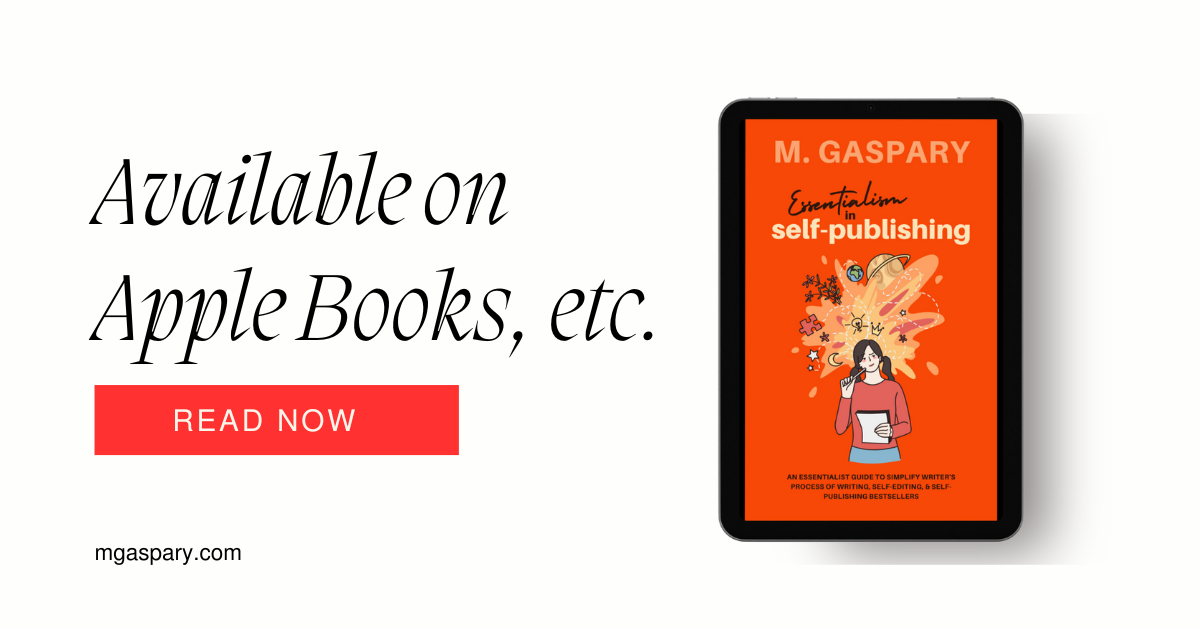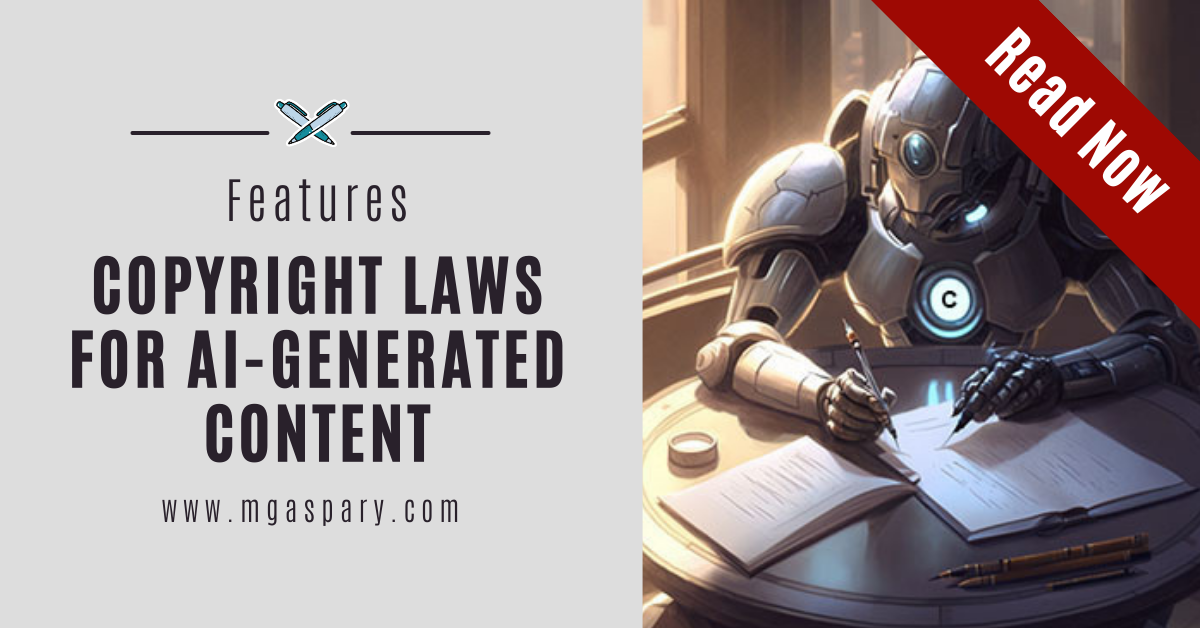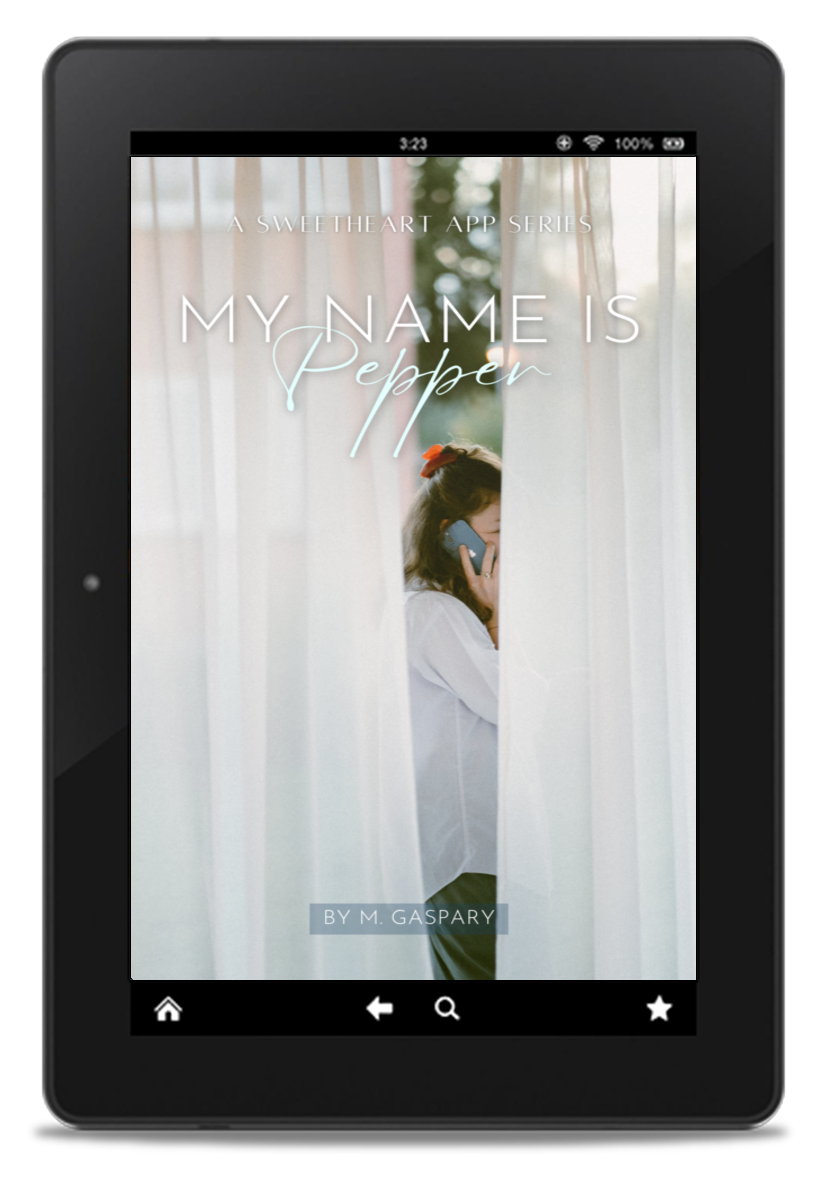Mecyll’s Note: Gearing towards the age of AI, you, as a writer, must be aware of it and its application, affecting our writing process and routines.
Despite the increasing use of artificial intelligence in our daily lives, especially in our field, we ensure we don’t take the copyright laws for AI for granted.
To provide us with a better explanation, here’s Jon Chen, a full-fledged lawyer. If you like to share your thoughts about this topic, please feel free to leave a comment below. Happy writing! 🙂
Artificial intelligence (AI) technology has been making waves, especially after ChatGPT was released on November 30, 2022. Searches for AI writing tools have skyrocketed since then. This said, let’s dive into this.
If you are up for any creative endeavor, it’s reasonable to talk about the remarkable copyright laws for AI tools. Hear me out.
Table of Contents
- What are AI Writing Tools?
- Overview of U.S. Copyright Laws for AI
- Recent Guidance from the U.S. Copyright Office
- Future of Copyright Laws for AI-Generated Work
- Final Thoughts: On Future Copyright Laws for AI
- About the Author
What are AI Writing Tools?
AI writing tools are based on natural language processing, a branch of AI.
When a user inputs text instructions known as “prompts” into AI writing tools, it produces human-like writing ranging from simple paragraphs to complete articles.
There is no denying that AI writing tools can be helpful for writers who need to create different types of written content.
However, whether U.S. copyright laws will protect writing generated by AI writing tools is uncertain.
Overview of U.S. Copyright Laws for AI
The U.S. Copyright Act of 1976 did not consider writing created by AI. No laws or court decisions directly address computers creating text or art on their own.
The Copyright Act of 1976 (“Copyright Act”) states copyright protection is provided to “…original works of authorship fixed in any tangible medium of expression.” 17 U.S.C. §102(a).
It is unclear if AI-generated writing is considered “original works of authorship.” U.S. federal courts and the Copyright Office have only said works of authorship must have a human creator.
In that case, the tool was a camera.
The Burrow-Giles Lithographic Co. v. Sarony, 111 U.S. 53, 59 (1884) lawsuit is one of the earliest copyright law cases to consider the creative aspect of using a tool.
A work created by the simple manual operation of a machine would not be copyrightable
The defendant argued that the photographer claiming copyright infringement should not be entitled to copyright protection because the photograph was mechanically created by merely using a camera.
However, the U.S. Supreme Court disagreed and stated copyright protection existed because it included the photographer’s artistry.
In its court’s opinion, the photograph was the photographer’s original work of art as he posed the subject and arranged the costume and props.
Although it was not a subject of the lawsuit, the Supreme Court commented that a work created by the simple manual operation of a machine would not be copyrightable.
In Section 313.2 of the Compendium of U.S. Copyright Office Practices, Third Edition, the Copyright Office references the Burrow-Giles case when noting that works of authorship “must be created by a human being” and “[w]orks that do not satisfy this requirement are not copyrightable.”
To illustrate the point, the Section also provides examples of works created by non-human sources that do not qualify for copyright protection, such as photographs taken by a monkey, a mural painted by an elephant, or an application attributing authorship to a metaphysical being.
Recent Guidance from the U.S. Copyright Office
The U.S. Copyright Office (USCO) recently released a helpful document, Copyright Registration Guidance: Works Containing Material Generated by Artificial Intelligence, to clarify copyrights related to AI-generated work.
The document starts by analyzing the human authorship requirement for AI-generated work. It ends with guidance for copyright applicants who must identify AI-generated content in their work.
How the human authorship requirement is applied to AI-generated work
When a copyright application mentions AI-generated materials, the Copyright Office will assess each case to determine if the work resulted from “mechanical reproduction” or the author’s “own original mental conception.”
The guidance document focuses on the concept of text prompts. The Copyright Office states that AI-generated works created by human text prompts alone do not meet a human’s traditional creative elements of authorship.
It is unlikely that AI-generated writing can be copyrighted, even if it is created using prompt engineering, which can be very creative or unique instructions to the computer.
It is unlikely that AI-generated writing can be copyrighted.
The Copyright Office states in a footnote of the Copyright Registration Guidance that “[w]hile some prompts may be sufficiently creative to be protected by copyright, that does not mean that material generated from a copyrightable prompt is itself copyrightable.”
This analysis about prompts came a few months after an artist named Kristina Kashtanova argued that using text prompts to design an AI-generated image should entitle her to copyright registration of that image.
The Copyright Office initially approved the registration of the artist’s digital artwork, “Zarya of the Dawn,” because the copyright application did not mention that AI was used to create the image.

However, they later found out about the AI when the media reported on the copyright registration.
After the Copyright Office learned how the image was created with the AI system called Midjourney, they canceled the copyright registration.
However, the work was reregistered only to provide copyright protection for the text elements which the author created.

The artist claimed that she should be entitled to copyright protection for her work, as she entered “creative, human-authored prompts” into the AI system to create the final product.
Even though she put “hundreds or thousands of descriptive prompts” into the Midjourney to make the final product, the Copyright Office disagreed that she was entitled to copyright protection for the image.
They said it is uncertain whether a particular prompt would generate a specific image, so the user does not have enough control to be considered an “author” of the work.
How to submit copyright applications that include AI-generated work
The Copyright Registration Guidance also provides instructions about submitting copyright applications if AI-generated work was not adequately disclosed. Here is a summary of the instructions:
- If an author includes AI-generated text in a larger body of work, they should only claim the portions of the work they wrote.
- An author can seek copyright protection for the creative arrangement of human and AI-generated work.
- Authors must disclose AI-generated writing under the “Material Excluded” section when the writing is more than “de minimis,” a legal rule that the use is so minor that it lacks importance.
Future of Copyright Laws for AI-Generated Work
Stephen Thaler filed a lawsuit in federal trial court involving the Copyright Office’s refusal to register an AI-generated digital image.
There is a chance higher federal courts may have the opportunity to set new rules if either party to the lawsuit appeals to the trial court’s decision.
In 2019, the U.S. Copyright Office denied an application to register a copyright for a digital art piece called “A Recent Entrance to Paradise,” which was created using Stephen Thaler’s AI system, Creativity Machine.
The denial was due to the lack of human authorship, as the application stated a machine independently created it.

After the U.S. Copyright Office refused to reconsider their decision twice, Stephen Thaler filed a lawsuit against the government agency in a United States District Court.
This year, he filed documents that requested the court to overturn the Copyright Office’s decision to refuse copyright registration of the digital image.
If the court grants Stephen Thaler’s request, his AI-generated image will be protected by copyright laws. We should be expecting a decision from the court soon.
Final Thoughts: On Future Copyright Laws for AI
The application of U.S. copyright laws to AI-generated writing is still uncertain. We will better understand what to expect when the Thaler case is resolved.
If you’re looking for a U.S. copyright registration for a work that includes AI-generated text, you must exclude ownership when you file your application.
Otherwise, the Copyright Office has the right to cancel your registration. The Copyright Office has not entirely ruled out the possibility that an author may receive copyright registration of AI-generated text.
AI writing tools differ from art generators since a limited set of words in a language can be used to express an idea. This means getting copyright registration for written work generated by AI writing tools may be possible.
Ultimately, the U.S. Copyright Office will decide to register such work first.
About the Author

Jon Chen is an accomplished lawyer and entrepreneur who founded Ethium Law, APC.
With over 10 years of litigation experience and 5 years of business transaction experience, Jon deeply understands the legal complexities and challenges businesses face.
Jon also created Avenue Alpha, which provides practical advice and resources to help people achieve their personal and professional goals.
He is passionate about positively impacting others and is committed to empowering others to succeed.



Leave a Reply